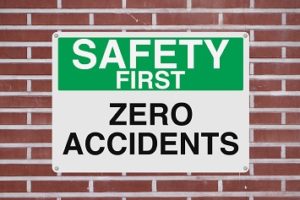Have you set a zero incident goal for your company? It’s an attractive idea—the notion that all accidents are preventable—and some studies have shown that companies that make such a commitment do reduce their lost-time incidents. A new study of 27 European companies in 7 different countries that have made a commitment to “zero accident vision” (ZAV) reveals how management and workers feel about ZAV programs.

amanalang / iStock / Getty Images Plus / Getty Images
The study, which will be published in the July 2017 issue of the journal Safety Science (but which is available now), found that companies with ZAV programs reported high levels of commitment, safety communication, safety culture, and safety learning.
Commitment Comes First
Like all worthwhile goals, “getting to zero” takes determination and commitment—and an understanding of what the tagline actually means. According to the study’s authors, it is a mistake to think of “ZAV” as a quantitative target; rather, it is an “ambition to make work safe” that embraces long-term, sustained effort. Given that, it is only natural that commitment is the essential ingredient that underpins the rest of the program.
The companies surveyed reported very high levels of both organizational and individual commitment to the ZAV ideal. Of note was the finding that management respondents reported fractionally higher levels of commitment to ZAV than workers (scoring 3.21 on a four-point scale, compared to a score of 3.06 for workers). According to another study done in Germany, it really does make a difference: high levels of commitment to a ZAV program correlate with a reduction in work-related illness.
The demonstration of commitment by management drives the return commitment from workers. The most important demonstration of commitment, of course, is the identification and elimination of workplace hazards. When workers see that management is truly committed to creating a safe work environment through the implementation of effective hazard controls, their levels of trust and participation improve.
Communication Keeps It Going
Communication between management and workers, and among individual workers, were also extremely important—in particular, management safety communication was ranked as important by both management and workers. Successful communication depended upon three factors:
- ZAV or safety-specific promotion programs. These programs functioned not only to enable management to communicate its safety commitment to workers but also to encourage more informal safety communication among workers, as well as the generation of safety suggestions and initiatives from workers, which could then be implemented by management. Workers are in the best position to identify hazardous conditions, and management is in the best position to commit the resources to reduce or eliminate those hazardous exposures.
- Regular, ongoing updates of communication and functional tools. Companies reported using a broad variety of methods for safety communication, including safety briefings, newsletters, info screens, videos, safety days and events, monthly safety themes, and mobile apps.
- Effective supervisor communication. One-way communication is not effective communication; in companies with strong safety commitments, an effort was made to create dialogue between workers and supervisors, using morning meetings, toolbox talks, safety walks, and workshops. Some companies reported training supervisors were trained in dialogue-based communication and safety facilitator skills.
Tomorrow we’ll look at the two other important components of a ZAV program: safety culture and safety learning.
